Women's Healthcare
Quantum simulation of the molecular interaction of the biological targets and drugs involved in the treatment of endometriosis, perimenopause, and menopause.
IMPACT/ CONTEXT
Women’s health remains an underfunded and under-researched area, leading to significant disparities in healthcare outcomes. Conditions such as endometriosis, perimenopause, and menopause face delayed diagnoses and limited treatment options.
Demographic disparities in access to care, diagnosis, treatment and management exacerbate these issues, particularly in underserved regions. For instance, research from the International Journal of Obstetrics and Gynaecology reports endometriosis diagnosis delays of up to 10 years, but the data varies widely depending on region and demographic, with many regions averaging much higher delays.
Endometriosis affects approximately 10% of women of reproductive age globally – around 190 million individuals. At the individual level, endometriosis can decrease quality of life due to severe pain, fatigue, depression, anxiety and infertility. Some individuals with endometriosis experience debilitating pain that prevents them from attending work or school. According to a report from the All Party Parliamentary Group on Endometriosis in the UK, 95% of people living with endometriosis said it has impacted their wellbeing in a negative manner, and 35% had a reduced income due to the condition.
HOW QUANTUM COULD HELP
Improving women’s healthcare, particularly for conditions like endometriosis, is deeply connected to computational challenges in drug discovery, where developing effective drugs requires understanding complex molecular interactions, optimising drug candidates and ensuring efficient binding to biological targets. Classical computer-assisted drug discovery (CADD) methods are fundamental for identifying and optimising drug candidates.
Techniques like molecular docking and molecular dynamics are used to simulate the interactions between small molecules (ligands) and biological targets (proteins). These methods rely on scoring functions and force fields to approximate molecular interactions and binding affinities. However, force fields are parameterized based on limited datasets derived from quantum chemistry methods like Density Functional Theory (DFT) and Coupled Cluster (CC), which often oversimplify the complexity of quantum mechanical effects and are also computationally expensive to simulate.
Quantum computing can be used in these molecular simulations to provide high fidelity quantum mechanical simulation data as an input into a large, tailored database for drug design that would otherwise be infeasible for classical simulations, thereby improving the overall quality of the computational pipeline by bridging the gap between small-scale quantum simulations and large-scale classical approximations.







